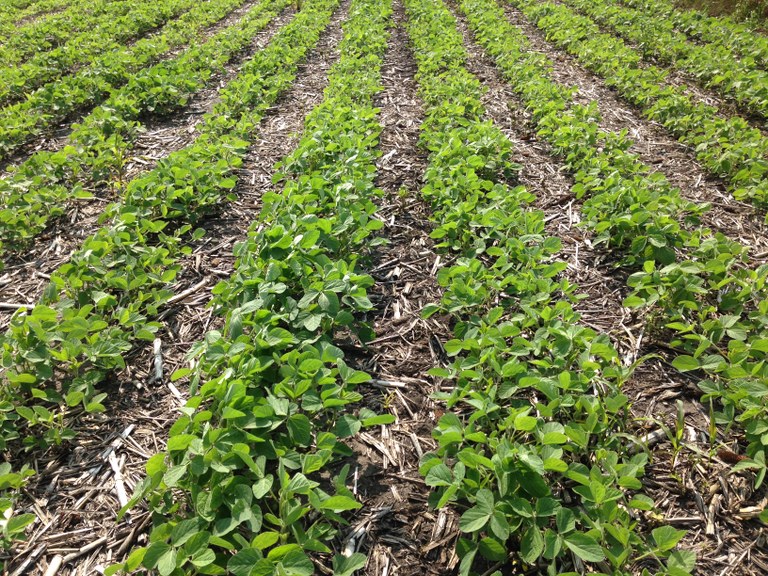Strategies for Profitable Soybean Production
NDSU Extension Service projected crop budgets are indicating challenges in generating a positive return to labor and management with soybean in 2016. With conservative market price projections and difficulty in reducing costs, the best method for making money with soybean is increasing yield. A basic strategy: 1) start with high yield potential - variety selection, and adequate plant establishment and nutrition; and 2) plant protection – manage weeds, disease and insects.
Main factors in variety selection include yield, maturity, herbicide tolerance traits, disease resistance, soybean cyst nematode resistance, iron chlorosis tolerance and market opportunities. NDSU Extension Service soybean variety references include ‘ND Soybean Variety Trial Results for 2015 and Selection Guide’ (www.ag.ndsu.edu/pubs/plantsci/rowcrops/a843_15.pdf).
The following is the current (January 2016) listing of yield comparisons by percentage for selected soybean plant establishment factors based on NDSU trials conducted during 1999-2015 (the italicized factor is recommended versus the alternative factor):
- Yield with reduced-till systems (no-till, strip till and direct seeded) was 4% > conventional tillage.
- Soybean following wheat yielded 5% > soybean as prior crop.
- Early planted soybean (last week in April through first week in May) yield was 9% > mid-May planted soybean.
- Planting rates of 150,000 to 175,000 pure live seeds (pls)/acre yielded 6% > planting rates of 100,000 to 130,000 pls/acre.
- Yield with intermediate row spacing (14 to 21 inches) was 3% > wide rows (28 to 30 inches).
- Use of fungicide-treated seed provided yield 6% > untreated seed.
- Weed control starting at planting time provided yield 5% > post-emergence weed control initiated when weeds were 2- to 4-inches tall.
General soybean plant nutrition recommendations:
- Do not apply fertilizer nitrogen. Use bacterial seed inoculant on fields without prior soybean history and consider as normal practice on all soybean fields.
- Apply phosphorus and potassium on soils with test levels less than medium.
- Yield response unlikely with other secondary or micro nutrients.
For details see NDSU Extension Service circular ‘Soybean Soil Fertility’ (www.ag.ndsu.edu/pubs/plantsci/soilfert/sf1164.pdf).

2016 NDSU Extension Service circulars available for managing weeds, disease and insects: Weed Control Guide (www.ag.ndsu.edu/weeds/weed-control-guides), Field Crop Plant Disease Management Guide, and Field Crop Insect Management Guide (www.ag.ndsu.edu/publications/landing-pages/crops/field-crop-insect-management-guide-e-1143). An NDSU app also is available for managing all three pest areas: www.ag.ndsu.edu/crops.
Greg Endres
Area Extension Agronomist


